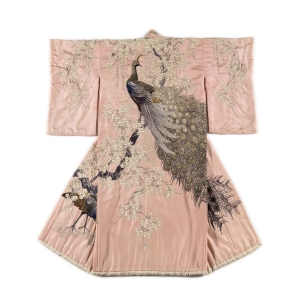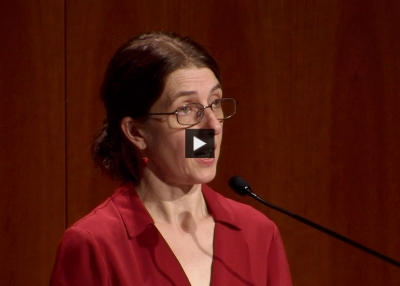Diving Into a Period of Momentous Change: "Meiji Modern's" Opening Night
NEW YORK, October 3, 2023 — Asia Society Museum celebrated its fall 2023 exhibition, "Meiji Modern: Fifty Years of New Japan," at a members-only opening and reception on Tuesday night. The exhibition is on view through January 7, 2024. The evening featured a reception in the Garden Court, live music, a lecture from British Museum curator Rosina Buckland, and docent tours of the exhibition. "Meiji Modern" is curated by Bradley Bailey, the Ting Tsung and Wei Fong Chao Curator of Asian Art at The Museum of Fine Arts, Houston; and Chelsea Foxwell, Associate Professor of Art History at the University of Chicago. It is organized by the Japanese Art Society of America in celebration of its 50th anniversary.
With over 80 of the finest examples of Meiji-era artworks in American collections, both public and private, Asia Society’s “Meiji Modern” exhibition is organized around five themes: crafting a modern state; navigating changing seas; fashioning the self; making history, enshrining myth; and cultivating a modern aesthetic. "'Meiji Modern' reveals how artists navigated a period of global competition, rising geopolitical tensions, advancing technology, and new artistic possibility,” says Asia Society Museum Director Yasafumi Nakamori.
As curators Bailey and Foxwell noted in the catalogue that accompanies the exhibition, when the Emperor Meiji was “restored” as the leader of Japan in 1868, the country lacked most of the features of a modern-nation state and was largely isolated from the outside world. Under the Edo shogunate’s isolationist foreign policy, only limited international trade at the port of Nagasaki was possible. This rapidly changed in 1853, however, when American Commodore Matthew Perry used the threat of military force to persuade Japan to open its ports and formalize diplomatic relations with the U.S.
Emperor Meiji’s commitment to modernizing Japan means that Meiji-era art was significantly influenced by outside actors. In her lecture at the opening event, Rosina Buckland discussed the influence of Chinese calligraphy and Western oil painting on Meiji-era artwork, as well as how artists began portraying current events, a practice that had been banned during the Edo period.
The Meiji period’s new laws and policies offered greater freedom and social mobility when compared with the rigid policies of the Edo period. "We can also see other things like the changing role of men and women in this time," says exhibition curator Chelsea Foxwell. As a result of this social change, new imports from abroad, and increased silk production, fashion began to evolve in Meiji society. Japanese civilians often integrated Western-wear (like rings, bowler hats, and suits) with traditional haori jackets and kimonos. Some of these designs can be seen in the exhibition.

Judy Zhu, Asia Society Museum’s Collections Management and Provenance Research Assistant, led one of the evening’s three tours of the "Meiji Modern" exhibition. She shares: “What particularly excites me is the fresh curatorial approach to the Meiji period, an era marked by unprecedented cultural and technological transformations. The sentiments and concerns of the Meiji people, as conveyed in the exhibition, resonate deeply with me as a member of Gen Z navigating this rapidly changing world.”
Between the lecture and tours, members enjoyed wine and a special sake grapefruit cocktail in the Garden Court, where towering trees were aglow with purple lights. Adam Robinson, a musician of the Classical Japanese Kinko Ryu Shakuhachi, roamed the crowd. Meanwhile, the AsiaStore invited guests to see the several items for sale that are themed around the exhibition, including the beautiful exhibition catalogue, Japanese scarves, and ceramic pieces.
“Meiji Modern: Fifty Years of New Japan” will be open to the public through January 7, 2024. Check out many more photos, videos, and behind-the-scenes looks at the exhibition on Asia Society’s Instagram. Plan your visit here.

